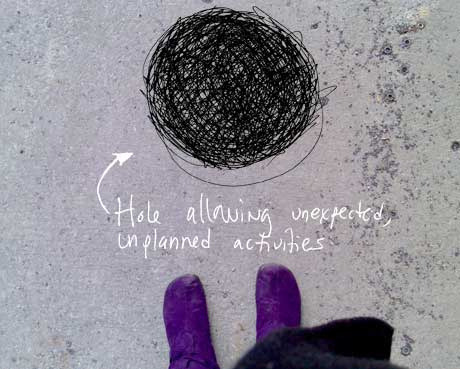As Chief Happiness Officer, Ginni ensures that iDoneThis is helping teams and companies stay connected, enhance productivity, and improve their inner work life. Every so often, a team leader will reach out to ask why some team members just aren’t getting on board. Ginni reached out to friend, time coach and productivity expert Elizabeth Grace Saunders for some advice. (This is the 2nd of a 3-part “Manager’s Series”).
Previously, I addressed how emotions such as overwhelm can prevent your team members from implementing changes. But sometimes the key factor limiting people’s behavior isn’t how they’re feeling but not knowing how to integrate the change into their own work habits.

As a time coach, trainer, and author of The 3 Secrets to Effective Time Investment, I’ve seen that people can understand how a tool or technique functions as an independent entity. But the gap between how something works and how something works for them isn’t easy for many to cross. That’s why in Chapter 7 of my book, I include a step-by-step guide to all the areas to consider when you’re crafting your own routine.
Apart from building new habits, you must also Learn how to build a team with strong bonding which will surely help with the new habits in your team.
To get you started, I’ll explain four of those considerations here. Go through these with your team the next time you’re trying to implement a new practice, such as having everyone use I Done This. Remember that team members may have different answers to these questions resulting in dissimilar methods—that’s natural and normal. The method isn’t as important as achieving the end goal of lasting behavioral change.
1. How Much Time Do I Need to Set Aside for This Activity?
The time you think it takes to complete an activity can be misleading. Depending on the task, you may also have to consider how long it takes to prepare for the task and to shift mental gears. For example, if you’re asking for a new type of report each week, you’re not just requesting the time it takes to write and send the report itself.
As a team, think through the true “time cost” of the habit change and determine whether or not it fits into everyone’s schedule. Depending on the size of the time commitment, this may also mean deciding as a group what will not happen or take lower priority.

2. What’s the Right Start Time or Trigger?
To lower the force required to break inertia and build momentum for a new routine, pick a start time or trigger event. This prevents the fuss involved in having to make (and remake) the decision of whether this activity stands as your highest priority of the moment. It also removes any lack of clarity about how and when the routine will fit into your schedule, which helps with realistic expectations. Without a start time or trigger, you can come to the end of the day, fall into bed, and realize that you didn’t do what you intended to do.
Start times work well when you have a high level of control over your schedule. They are sometimes necessary if you have a set limit on when you need to leave work.
Examples of a start time: I’ll reply with my iDoneThis update when the scheduled e-mail reminder arrives at 6 p.m.; I’ll go to the gym at 6 a.m.
Start triggers work well if your schedule is open to variables outside your control, which means that your life can’t run on clockwork precision. In order for start triggers to be effective, they must happen every time you want to start the desired activity. So don’t choose a trigger that doesn’t always happen for something you want to be a regular routine.
Examples of a start trigger: I will reply with my iDoneThis update after I finish my last task of the day; I’ll go to the gym after my daily 11 a.m. team call is over.
3. What Are Potential Barriers to Success?
Even with the best of routines, outside factors can significantly impact your ability to follow through. In fact, these external forces are the very reason that many people resist making and practicing routines. The reason: If I can’t implement perfectly and someone might mess up my plans, why even bother? But the fact that life happens doesn’t mean that you should give up all hope of making and following new routines. What you can do instead is to anticipate and prepare for potential barriers to success.
As a team, brainstorm how to avoid barriers to success, such as winding down regular business at least x minutes before people have to leave the office so they have time to do a daily wrap-up.

4. What Reminders Will Ensure That I Can’t Forget?
Sometimes you need more than one reminder to push you to do what you wanted to do, especially when forming a new habit. Each person needs different cues, but here are some ideas of what could work for team members aiming to implement I Done This:
- Set a daily alarm or text reminder on their mobile phones.
- Schedule an e-mail pop-up note on your computer.
- Put up a sign on the office door asking if they’ve completed the key wrap up activities.
- Give people a card that they can set on top of their handbag or keys when they arrive in the office that asks, “Have you done I Done This?”
Developing simple, sustainable routines that can support lasting behavioral change is critical to your company’s success. To find out more about how to make this happen, check out The 3 Secrets to Effective Time Investment: How to Achieve More Success With Less Stress.
Images: [1]: Akane Yamada; [2] Marie-Chantale Turgeon; [3] J.D. Hancock
